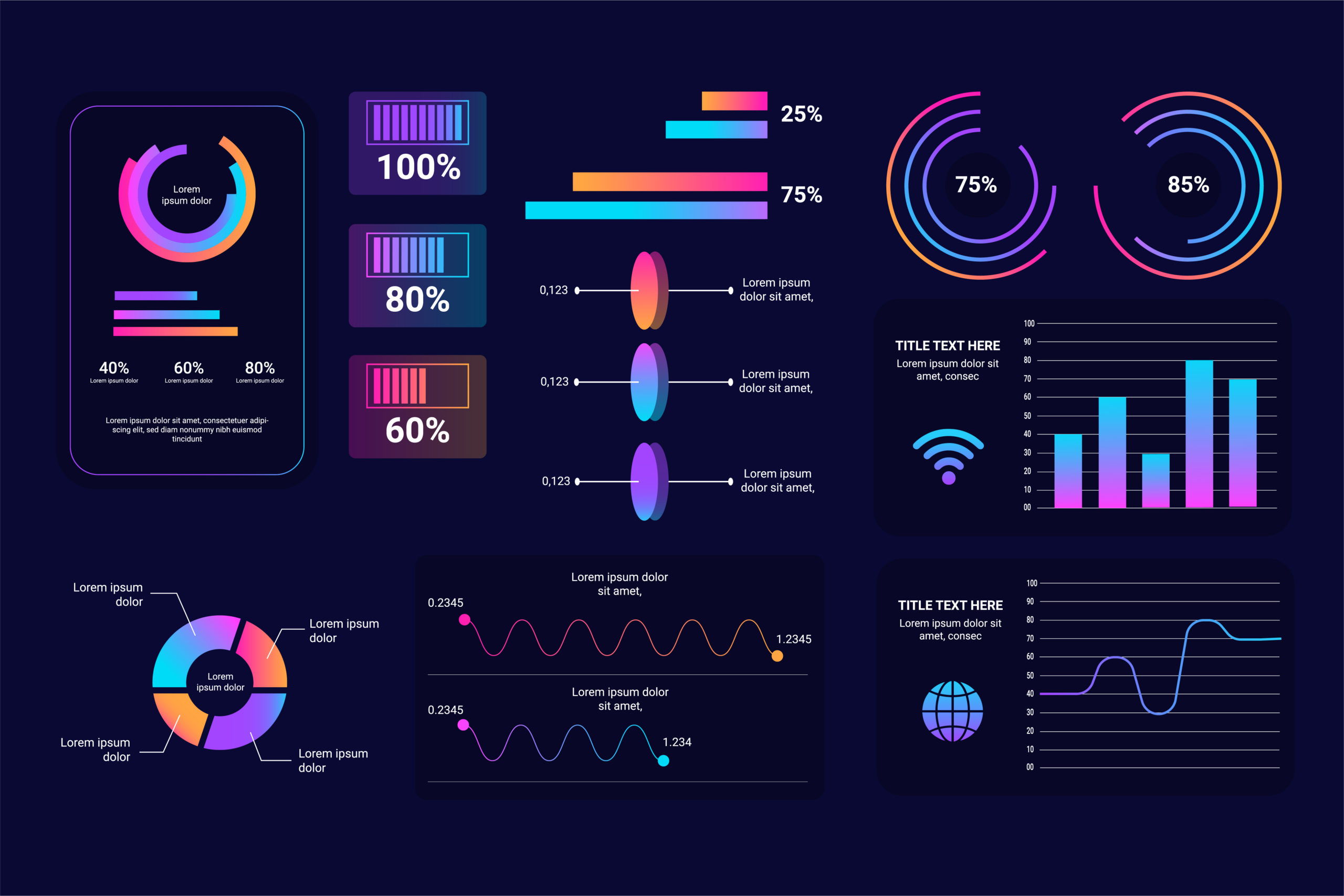
13 Website Redesign Trends: A Simple Guide
Last update: 21 December 2023 at 09:38 am
Website redesigns can be a great opportunity for businesses to not only update the look and feel of their site but also to improve the user experience and drive tangible results through digital marketing efforts.
A website redesign can be a great opportunity for web designers to not only update the look and feel of a site but also to incorporate new features and functionality that can improve the user experience for website visitors.
A study by KoMarketing done in the past few years found that companies that redesigned their website saw an average increase in sales of 22%.
Additionally, a website redesign can lead to an increase in search engines rankings, as Google takes into account the user experience when determining a site’s ranking.
In this article, we’ll explore 13 popular website redesign trends that businesses can consider to give their website a fresh, modern look and feel.
By staying up to date with the latest web design trends and incorporating them into a redesign, businesses can not only improve the look and feel of their website but also drive tangible results.
13 Trends to Consider in Website Redesign:
The world of web design is constantly evolving, and it’s important for businesses to stay up to date with the latest website design trends in order to keep their website fresh and modern.
Looking for a website redesign agency?
Discover the most relevant agencies for your project based on your own specific requirements.
Find an agency!Mobile-first design: The Rise of Mobile Devices
With the proliferation of smartphones and tablets, it’s more important than ever for web pages to be optimized for mobile devices. This means designing for the smallest screen first and then scaling up to larger devices.
By adopting a mobile-first approach, the website becomes easy to use and navigate on various devices, this is crucial as Google currently prioritizes mobile-friendly websites in its search results.
According to a study by ComScore, mobile devices accounted for 65% of digital media time spent in the US in 2018. This number is likely even higher today, making it essential for businesses to prioritize mobile-friendliness in their website redesign.
Minimalist Design: Simplicity is Key
Less is often more when it comes to modern web design, and minimalist design is a trend that shows no signs of slowing down. This approach involves using clean lines, plenty of white space, and a minimal colour palette to create a simple and uncluttered look.
A study by the Nielsen Norman Group found that users have a harder time completing tasks on cluttered websites, with an average completion time of 10% longer compared to uncluttered sites.
By opting for a minimalist design, businesses can help to improve the user experience and make it easier for website visitors to find what they are looking for.
One example of a minimalist website design is the landing page for the productivity tool Trello. The page’s simple layout and use of negative space make it easy to use and navigate.
Asymmetrical Layouts: Breaking the Grid
Gone are the days of boring, symmetrical website layouts. Asymmetrical layouts, which involve using irregular shapes and sizes to create a more visually interesting and dynamic layout, are popular in website redesign trends.
One example of a website that incorporates asymmetrical layouts is the design agency studio—a creative space. Their website uses irregular shapes and sizes to create a visually interesting and unique layout.
Elements on a website deviate from a neat and orderly grid layout, becoming off-centre or overlapping, resulting in a broken grid layout.
For example, an art gallery website actively places artworks in an asymmetrical layout, rather than neatly aligning them in a grid. This active approach creates a sense of movement, tension, and visual interest on the website.
It also allows the designer to draw attention to specific elements of the page, such as a call-to-action or a featured artwork.
Bold Typography: Making a Statement with Text
Typography is an important aspect of traditional web design, and the use of bold, striking fonts is a web design trend that is gaining popularity. Large, attention-grabbing headlines and text can help to draw the user’s eye and add visual interest to a web page.
Airbnb is one company that has effectively used bold typography in its website redesign. Their homepage features large, attention-grabbing headlines that draw the user’s eye and create a sense of excitement. It’s important to choose fonts that are easy to read and that fit with the overall aesthetic of the site and to use typography sparingly to avoid overwhelming the user.
Interactive elements: Adding a Layer of Engagement
Interactive elements, such as hover effects, animations, and scrolling effects, can add a layer of depth and engagement to a website.

The clothing retailer ASOS has incorporated interactive elements into their web designs, such as hover effects on product images and scrolling animations on their homepage.
These responsive design elements add a layer of engagement and make the website feel more dynamic. It’s important to use interactive elements sparingly, however, as too many can be overwhelming and may negatively
Creating Hierarchy: The Use of Split-screen Layout
The split-screen layout is another popular trend in a website redesign. It involves dividing the screen into two or more sections, each with its own unique content.
This approach allows businesses to showcase different products, services or messages at the same time, and it can also be used to create a sense of hierarchy on the page by placing the most important information on the top of the screen.
One example of a website that uses a split-screen layout effectively is the landing page for the fitness app, Peloton. The top half of the page features a video of people cycling, while the bottom half includes information about the app’s features and pricing plans.
Adding Delight: Micro-interactions in Web Design
Users trigger small animations or interactions called micro-interactions through their actions on the website. Examples include a button changing colour on hover and a message popping up to confirm form submission.
A study by the Nielsen Norman Group found that users are more likely to remember a website if it includes micro-interactions.
One example of a website that uses micro-interactions effectively is the e-commerce site, Amazon. The site uses hover effects to reveal additional information about products, and also uses animations to indicate when a product has been added to the shopping cart.
Reducing Eye-Strain: The Adoption of Dark Mode
The rise of the dark mode is another website design trend that’s gaining popularity, particularly with the increasing use of smartphones and other mobile devices.
This approach involves using a darker colour scheme, which can help to reduce eye strain in low-light conditions, and it can also help to save battery life. Additionally, a dark mode can give a website a modern, sleek and minimalistic look.
A study by Google found that users are more likely to engage with a website if it includes a dark mode option.
An example of a website that uses dark mode is the social media platform, Twitter. The site allows users to switch to a dark mode view to reduce eye strain and make the site more visually pleasing in low-light conditions.
Immersive Content: The Use of Video and Virtual Reality
As technology advances, so do the ways in which businesses can present their content. Using videos and virtual reality in a website redesign can create an immersive experience for the user and provide a more interactive way to engage with a brand.
Businesses can use videos to showcase products or services, or to give a behind-the-scenes look at their company. Virtual reality can be used for product demonstrations, virtual tours, and other immersive experiences.
Among popular website redesign trends is using storytelling, which is a way to connect with visitors by using a narrative that resonates with them.

Companies are using creative elements like illustration, animation and photographs to create a more human and approachable design, that captures the visitor’s attention and keeps them engaged. Businesses can use storytelling to communicate their brand’s mission, values, and personality.
Micro-interactions: Enhancing the User Experience
Micro-interactions are small animations and interactions that are triggered by user actions on a website.
For example, a shopping website, if the user hover over the cart icon, a small animation can pop-up showing how many items are in their cart.
Another example, is on a social media website, when you click on the like button, an animation of the heart increasing in size can happen.
These small animations are used to provide feedback, guide users through a process, or simply add a touch of fun and personality to a website.
Colour Gradients: Adding depth and dimension
Colour gradients are a way to add depth and dimension to a website by transitioning between two or more colours in a seamless, gradient effect.
For example, on a travel website, the header might have a gradient of blue to a green that blends the sky and ocean with tropical vegetation.
This can be done by using CSS to blend different shades of a single colour, or by using different colours to create a more dynamic and interesting effect.
Colour gradients are a great way to add a modern, dynamic look to a website, and can be used to create a sense of movement and flow.
Authentic Photography: Adding a human touch
In a digital world, authentic photography has become a powerful tool for a website redesign. Using real photos of real people and places can add a personal and human touch to a website, and can help to establish a connection between a business and its audience.
For example, a bakery website can feature photos of actual cakes and pastries baked in the shop, instead of using stock images, it can also include pictures of the shop, the bakers and the customers enjoying the food.
|
Discover the most relevant agencies for your project based on your own specific requirements.
Find an agency!Use authentic photography to showcase products or services in a natural, relatable way.
3D Elements: Adding depth and dimension
Like illustrations, animations, and interactive objects are becoming increasingly popular in website redesign.
3D elements create a sense of depth and dimension and make the website more engaging and interactive.
This can include adding 3D illustrations of the product, such as a car manufacturer’s website having an interactive 3D model of their cars.
Or using interactive animations to guide users through a process, such as on a mobile app for furniture, you can use 3D animations to show how a piece of furniture would look in a room with different lighting and angles.
Conclusion:
Following web design trends in a website redesign can help to give a business’s website a fresh, modern look and feel, and can also improve the user experience. It’s important to remember that while it’s important to stay up to date with the ongoing web design trends, it’s also important to ensure that the website is functional and easy to use for all website visitors.
Experienced web designers can work with you to create a visually appealing and user-friendly website that is responsive and optimized for all devices.
FAQs
Web design in 2024 is characterised by innovative trends such as immersive user experiences, AI-driven personalisation, 3D visuals, and minimalistic yet vibrant designs. These elements collectively contribute to a dynamic and engaging online presence.
The latest in web designing involves the integration of technologies such as augmented reality (AR), virtual reality (VR), and artificial intelligence (AI). Additionally, responsive and adaptive design principles, dark mode, and sustainability-focused design practices are gaining prominence.
The future of web design is likely to be shaped by advancements in technology, such as voice user interfaces, AI-driven personalisation, and seamless integration of virtual and augmented reality. Designers will continue to focus on creating inclusive, accessible, and environmentally sustainable digital experiences for users worldwide






